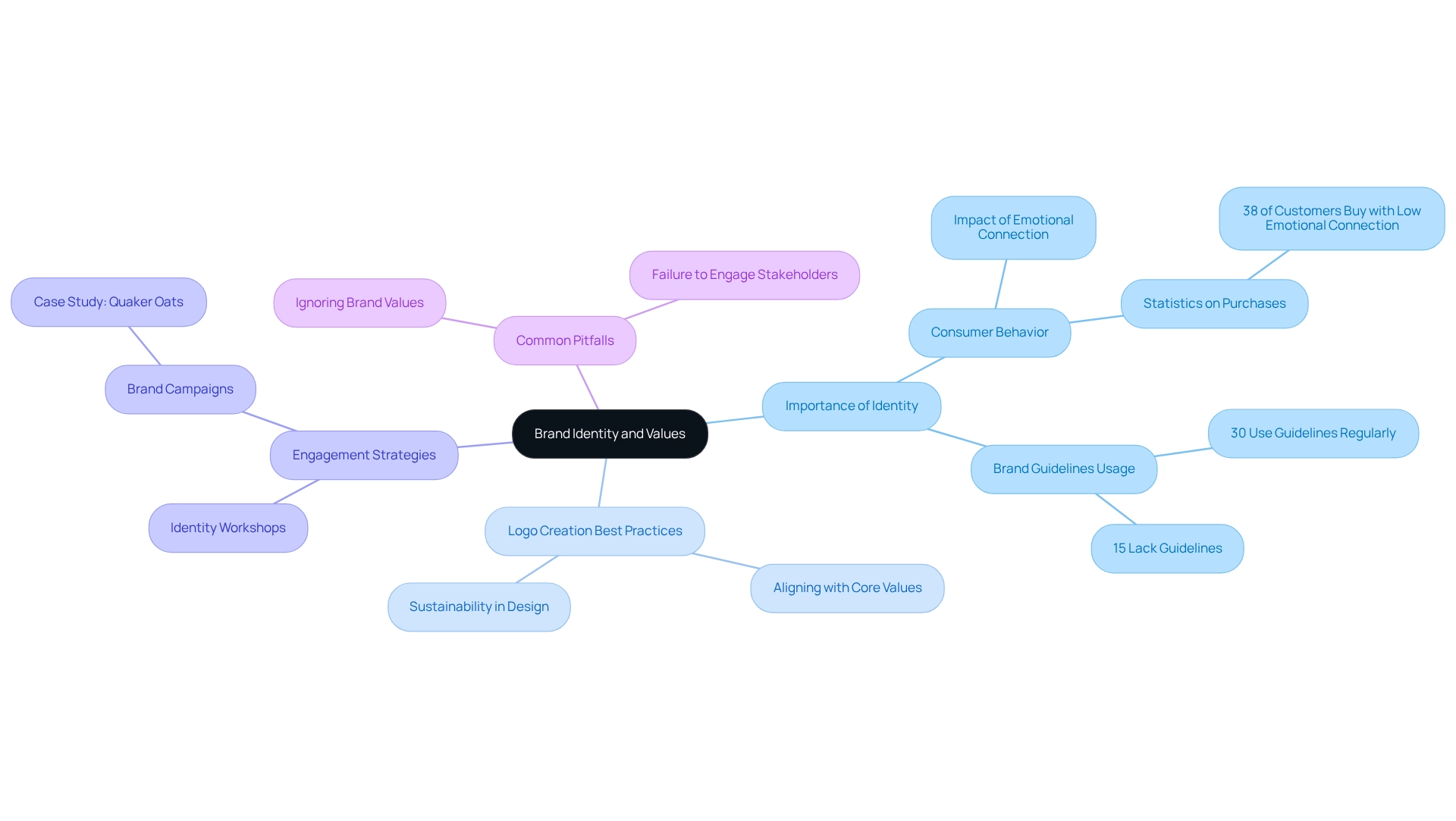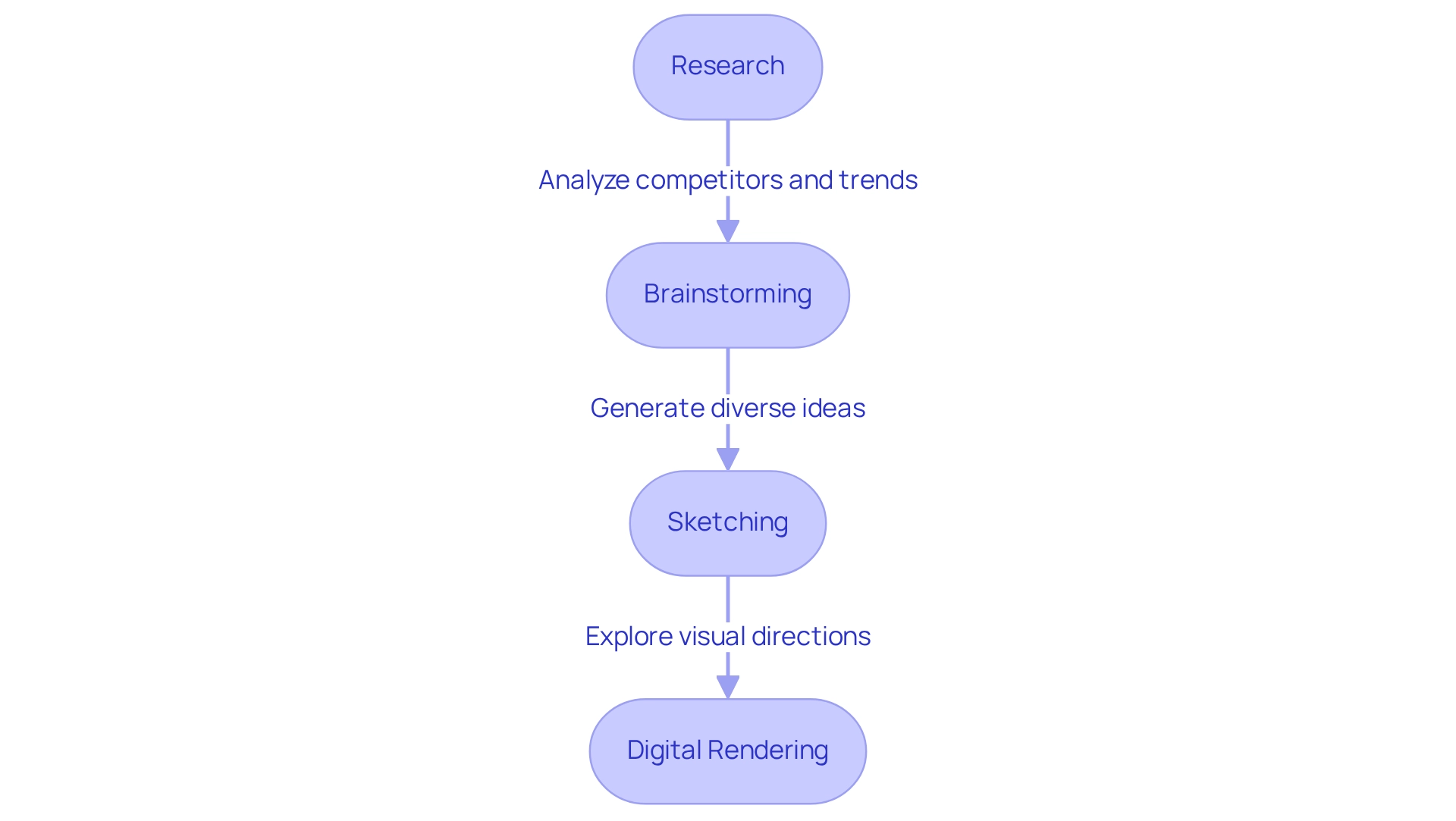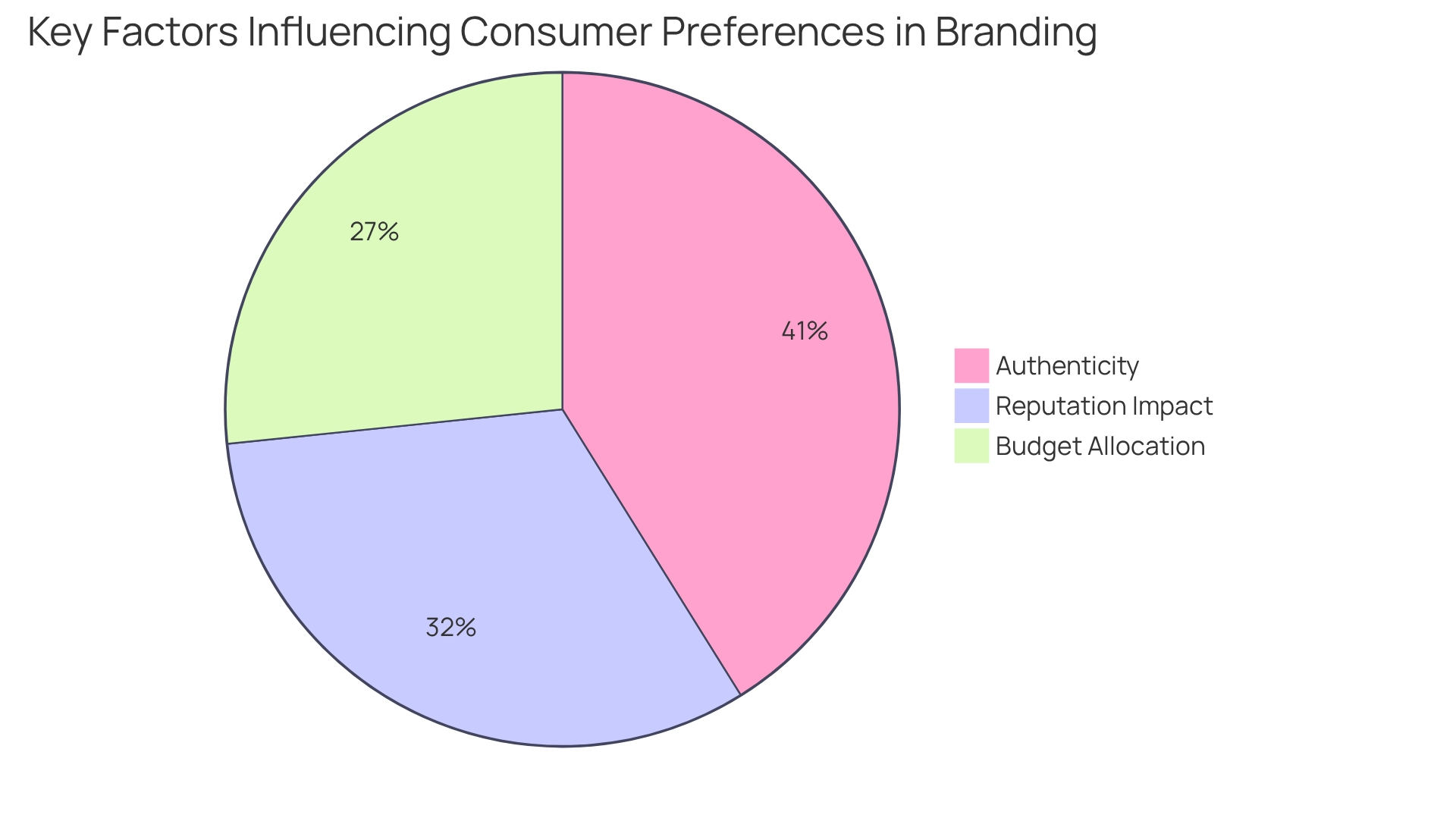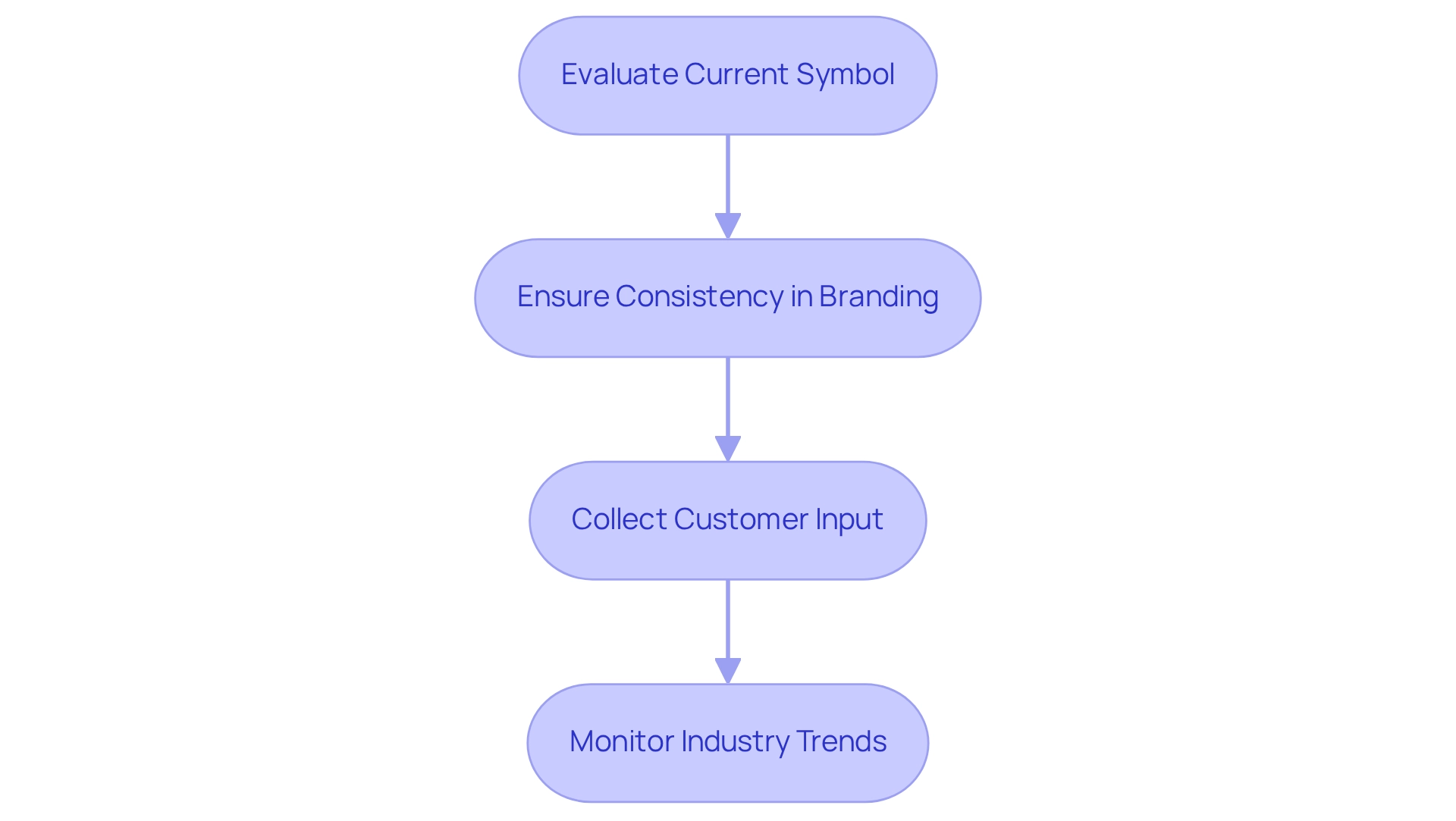Sustainable Branding Practices
Best Practices for Logo Creation in the UAE: Strategies for Brand Managers
Overview
This article presents best practices for logo creation in the UAE, underscoring the critical need to align a logo with brand identity, values, and marketing strategies. A structured design process is essential, accompanied by rigorous testing and feedback mechanisms. Furthermore, consistency across branding efforts is paramount, as these elements collectively enhance consumer trust and loyalty.
Introduction
In the competitive landscape of branding, the creation of a logo transcends mere artistic endeavor; it stands as a strategic necessity. A logo serves as the visual cornerstone of a brand’s identity, encapsulating its values and mission while resonating with the target audience.
As brands navigate the complexities of consumer perceptions and market trends, understanding the intricate process of logo design becomes paramount. Each step—from defining brand identity to implementing structured design processes and incorporating feedback mechanisms—plays a crucial role in crafting a logo that not only stands out but also fosters loyalty and trust.
This article delves into the essential strategies brand managers must employ to ensure their logos effectively communicate their brand’s essence and align seamlessly with broader marketing objectives.
Define Brand Identity and Values
To create an impactful logo, managers must first articulate the company’s identity and core values, adhering to the best practices for logo creation in the UAE. This foundational process requires a profound understanding of the organization’s mission and the desired market perception. Engaging in effective identity workshops or brainstorming sessions with key stakeholders can significantly illuminate these essential components. For instance, a company committed to sustainability should reflect this principle through the use of green hues or environmentally friendly symbols in its emblem. Such alignment guarantees that the logo visually embodies the identity and effectively communicates its core principles to the audience.
Current statistics reveal that only 30% of identities consistently utilize their guidelines, while 15% lack them entirely. This gap underscores the critical importance of establishing a product identity, as only 38% of customers with low emotional connections choose to purchase from companies. Therefore, establishing a clear identity for the company is not merely a creative endeavor; it is a strategic necessity that profoundly influences consumer behavior and loyalty. As Howard Schultz emphasizes, a connection to a company’s values enhances customer loyalty, making it essential for those overseeing the company to integrate these values into their logo.
WonderEight offers a comprehensive suite of branding solutions, including audits, packaging and collateral design, digital marketing strategies, social media strategy, and gamification. These services are designed to assist product leaders in effectively defining and conveying their identity. For example, the extensive campaign for Quaker Oats demonstrates how effective branding strategies can lead to increased engagement and a stronger market presence. Brand supervisors must also remain vigilant of common pitfalls in establishing identity, ensuring that their emblem creation process adheres to the best practices for logo creation in the UAE and is both effective and aligned with their core values.

Follow a Structured Design Process
Brand managers must implement a structured development process that encompasses several critical stages: research, brainstorming, sketching, and digital rendering. Begin with thorough research on competitors and market trends to gather inspiration and pinpoint opportunities for differentiation. This essential step is vital; research indicates that 78% of consumers perceive logos as possessing artistic attributes, underscoring the significance of aesthetics in enhancing brand recognition.
Following the research phase, engage in brainstorming sessions to generate a diverse range of ideas, emphasizing simplicity and versatility in creation. Sketch multiple concepts to explore various visual directions. Once a selection of promising concepts is identified, transition to digital rendering. This phase allows for the enhancement and evaluation of designs across different formats, ensuring adaptability for both digital and print media.
This methodical approach not only fosters creativity but also aligns with industry best practices. For instance, a case study involving Quaker Oats, a project spearheaded by WonderEight, demonstrated how a customized marketing strategy, grounded in organized development processes, led to heightened recognition and a stronger connection with their target demographic. As the landscape evolves, it is projected that by 2026, 55% of brands will incorporate narrative components, further emphasizing the necessity for a deliberate creation process.
Incorporating insights from creative experts, such as Jason Moyer, who stated that “Mint’s identity focuses on simplicity and clarity,” it becomes evident that a well-executed symbol creation process can significantly influence consumer perception, with 46% of consumers willing to spend more for companies they trust. By adhering to these organized creative principles, brand leaders can craft symbols that not only resonate with audiences but also endure over time. Furthermore, WonderEight’s diverse client portfolio exemplifies the effectiveness of these strategies, reinforcing the importance of a structured approach in achieving branding success.

Incorporate Testing and Feedback Mechanisms
Incorporating testing and feedback mechanisms is essential for refining brand designs. Brand managers must utilize focus groups or surveys to gather insights on how potential customers perceive the emblem. Key questions should address clarity, memorability, and emotional response. For instance, if a symbol aims to evoke trust, feedback should assess its effectiveness in achieving that goal. Testing the emblem across various contexts—such as digital platforms, print materials, and merchandise—can further reveal its versatility and impact. This iterative process allows for adjustments based on real-world reactions, ultimately leading to a more compelling final product.
Current trends suggest that 88% of consumers prioritize authenticity in branding initiatives, emphasizing the importance of aligning design elements with customer expectations to communicate authenticity effectively. Furthermore, statistics indicate that 69% of job applicants are prone to decline offers from companies with a poor reputation, highlighting how an effectively crafted emblem can greatly affect public perception and hiring initiatives. Successful case studies, such as the strategic use of blue in marketing—utilized by companies like Facebook and IBM—demonstrate how color can enhance consumer trust and establish a credible market presence. By effectively collecting customer input on visuals, managers can ensure their symbols connect with audiences and enhance their overall identity.
Moreover, with brands updating their identities every five years by 2024, continuous testing and feedback systems are essential to stay competitive and pertinent in the market. Significantly, around 57% of small enterprises will allocate about $500 to create their brand image, underscoring the necessity of ensuring that the design resonates with the intended audience.

Align Logo Design with Marketing Strategy
To maximize the impact of a symbol, it must be intricately aligned with the overall marketing strategy, reflecting the best practices for logo creation in the UAE, a principle that WonderEight emphasizes in its comprehensive branding and digital marketing solutions. This alignment guarantees that the emblem not only conveys the company’s messaging but also adheres to the best practices for logo creation in the UAE to connect with the intended audience. For instance, if a company’s marketing approach highlights innovation, the emblem should integrate contemporary design features that successfully communicate this message. Studies show that 72% of customers favor symbols that distinctly convey a company’s character, underscoring the psychological effects of branding and how identifiable symbols influence buying choices. Furthermore, ensuring uniformity across all marketing platforms—such as social media, advertising, and packaging—is essential for strengthening corporate identity. WonderEight’s integrated marketing solutions, including social media strategy, digital audits, and e-commerce development, support this consistency. A cohesive emblem enhances awareness and confidence, with research indicating that companies with powerful symbols attain greater customer loyalty. In fact, around 78% of consumers view brand symbols as possessing artistic qualities, which can significantly affect their purchasing choices. This artistic quality bolsters customer loyalty, as highlighted by Facebook, which indicates that the main traits individuals associate with customer loyalty include consistency and experience.
Product managers must frequently assess and adjust the emblem to ensure it remains aligned with evolving marketing strategies. This proactive approach not only enhances messaging but also cultivates loyalty, as 46% of consumers are willing to pay more for companies they trust. By prioritizing visual identity design that incorporates best practices for logo creation in the UAE and maintaining consistency across channels, companies can create a powerful visual presence that drives engagement and success. To implement these practices effectively, product managers can follow these steps:
- Evaluate the current symbol’s alignment with the brand’s communication and marketing strategy.
- Ensure consistency in branding usage across all marketing channels, leveraging WonderEight’s expertise in social media management, digital audits, and e-commerce solutions.
- Consistently collect customer input on brand perception and make modifications as needed.
- Monitor industry trends to keep the logo relevant and appealing.

Conclusion
Crafting an effective logo is not merely an aesthetic pursuit; it is a strategic endeavor that encapsulates a brand’s identity, values, and marketing objectives. By clearly defining brand identity and values, brand managers can create logos that resonate with their target audience and foster emotional connections. This foundational understanding underscores the critical importance of aligning a logo with the brand’s mission and consumer perceptions.
Implementing a structured design process is equally crucial. By following stages such as research, brainstorming, and testing, brand managers can cultivate creativity while ensuring that the logo stands out in a competitive landscape. The incorporation of feedback mechanisms allows for real-time adjustments, enhancing the logo’s effectiveness and relevance. This iterative process not only refines the design but also helps brands communicate authenticity—an essential trait in today’s market.
Moreover, aligning logo design with the broader marketing strategy amplifies its impact. A logo that reflects the brand’s messaging and maintains consistency across various channels strengthens brand recognition and consumer loyalty. As consumers increasingly favor brands that express clear personalities through their logos, the importance of thoughtful design and strategic alignment cannot be overstated.
In summary, the journey of logo creation is a multifaceted process that demands careful consideration and alignment with brand values, structured design practices, and a commitment to consumer feedback. By prioritizing these elements, brand managers can craft logos that not only capture attention but also build lasting relationships with their audience, ultimately driving brand success in an ever-evolving marketplace.
Frequently Asked Questions
What is the first step in creating an impactful logo?
The first step is to articulate the company’s identity and core values, which requires a profound understanding of the organization’s mission and the desired market perception.
How can companies effectively understand their identity and core values?
Companies can engage in effective identity workshops or brainstorming sessions with key stakeholders to illuminate essential components of their identity and values.
How should a company committed to sustainability reflect this in its logo?
A company committed to sustainability should use green hues or environmentally friendly symbols in its emblem to visually embody its commitment to this principle.
What statistics highlight the importance of establishing a product identity?
Current statistics reveal that only 30% of identities consistently utilize their guidelines, while 15% lack them entirely, emphasizing the critical importance of establishing a product identity.
How does a clear company identity influence consumer behavior?
Establishing a clear identity is a strategic necessity that profoundly influences consumer behavior and loyalty, as only 38% of customers with low emotional connections choose to purchase from companies.
What is the significance of integrating company values into a logo?
Integrating company values into a logo enhances customer loyalty, making it essential for company overseers to ensure that these values are reflected in their branding.
What services does WonderEight offer to assist in branding?
WonderEight offers a comprehensive suite of branding solutions, including audits, packaging and collateral design, digital marketing strategies, social media strategy, and gamification.
Can you provide an example of effective branding?
The extensive campaign for Quaker Oats demonstrates how effective branding strategies can lead to increased engagement and a stronger market presence.
What should brand supervisors be cautious of when establishing identity?
Brand supervisors must remain vigilant of common pitfalls in establishing identity to ensure that their logo creation process adheres to best practices and aligns with their core values.



